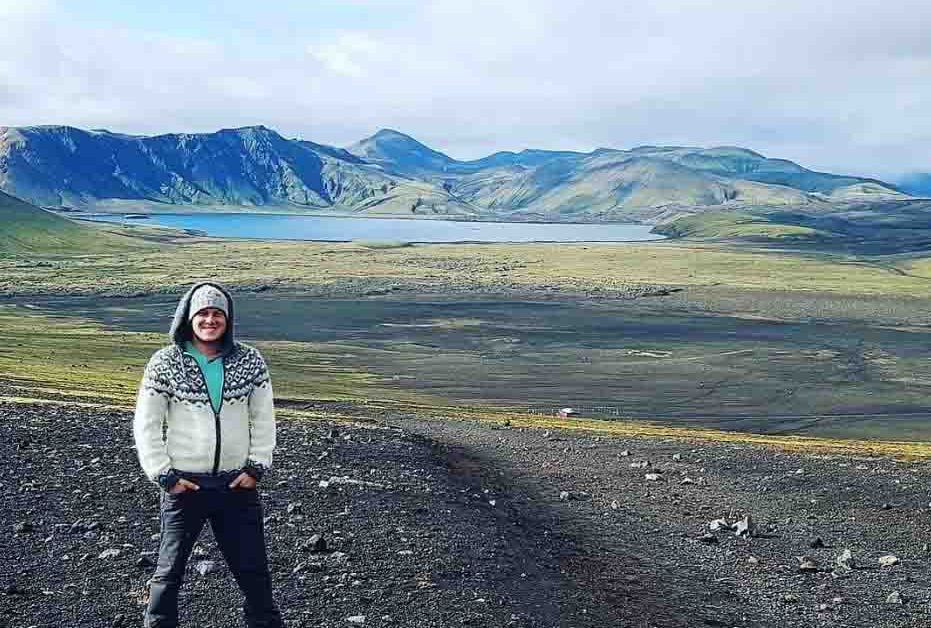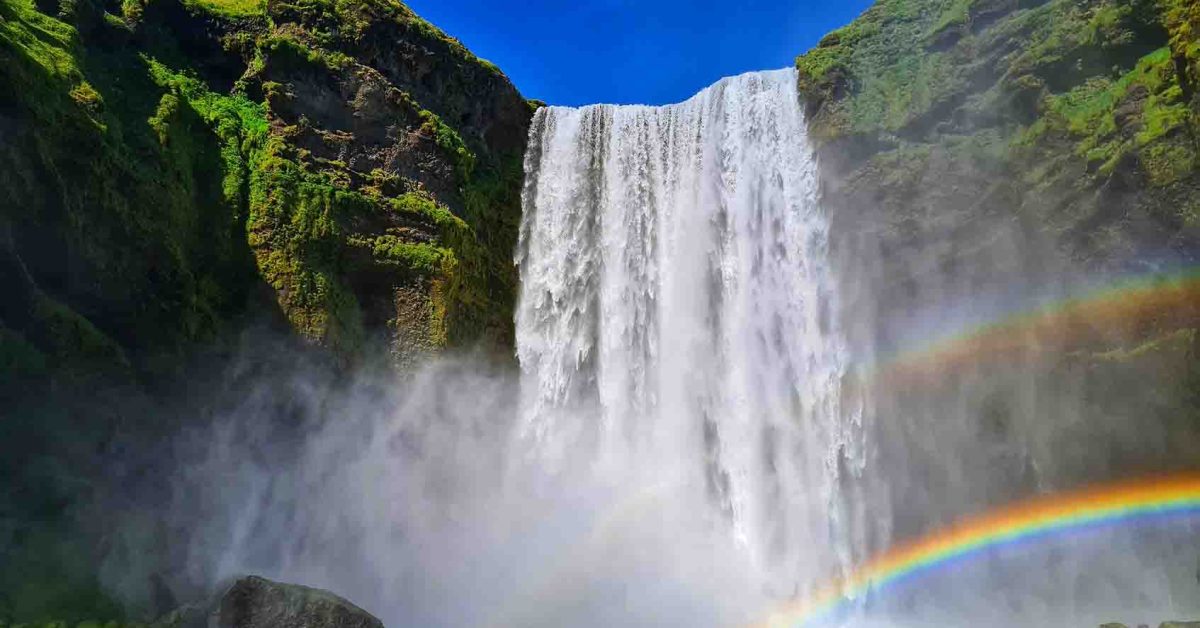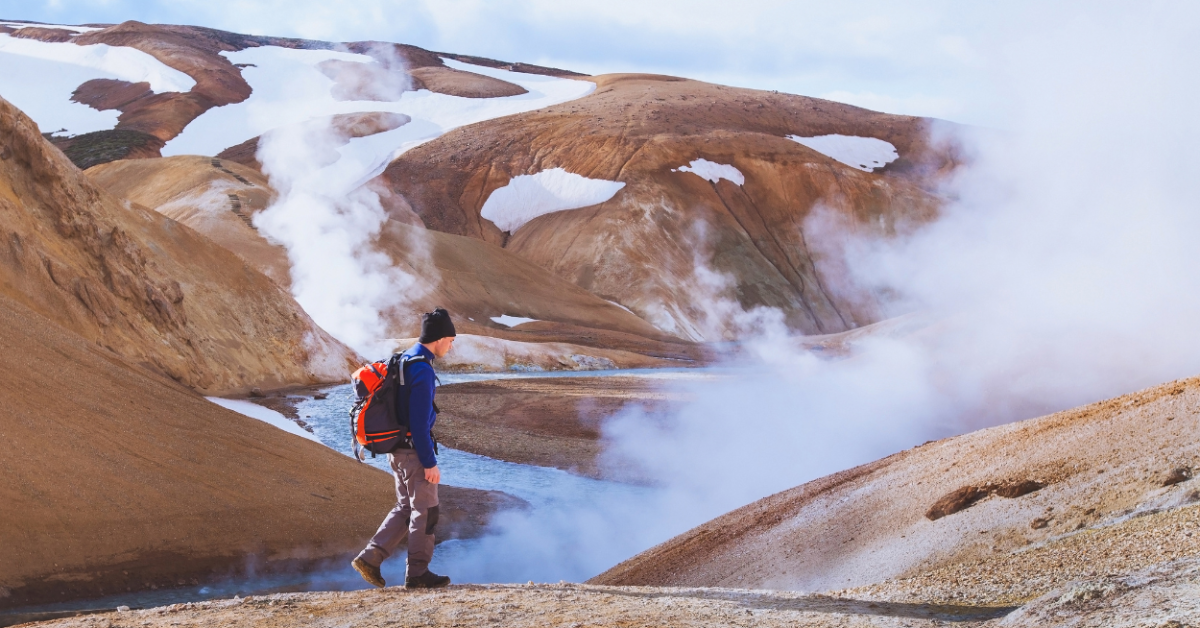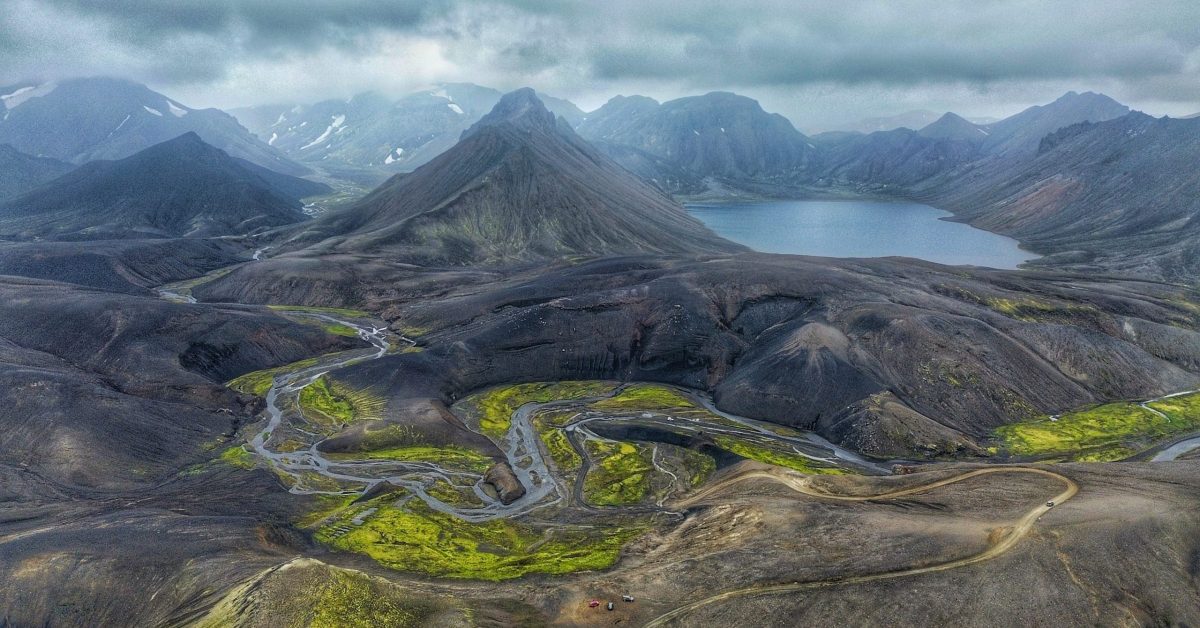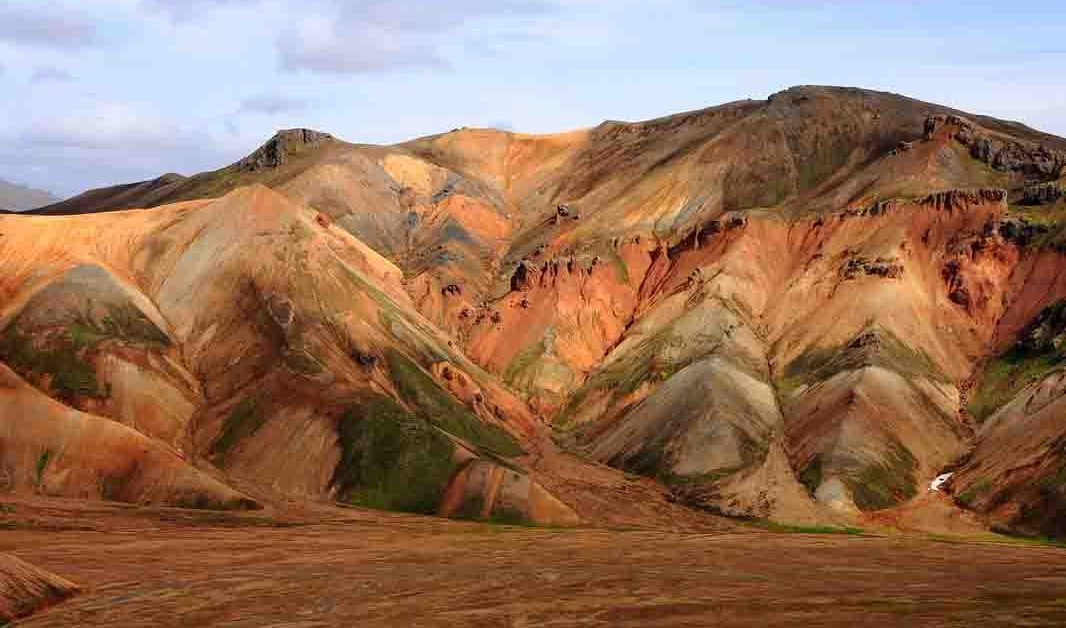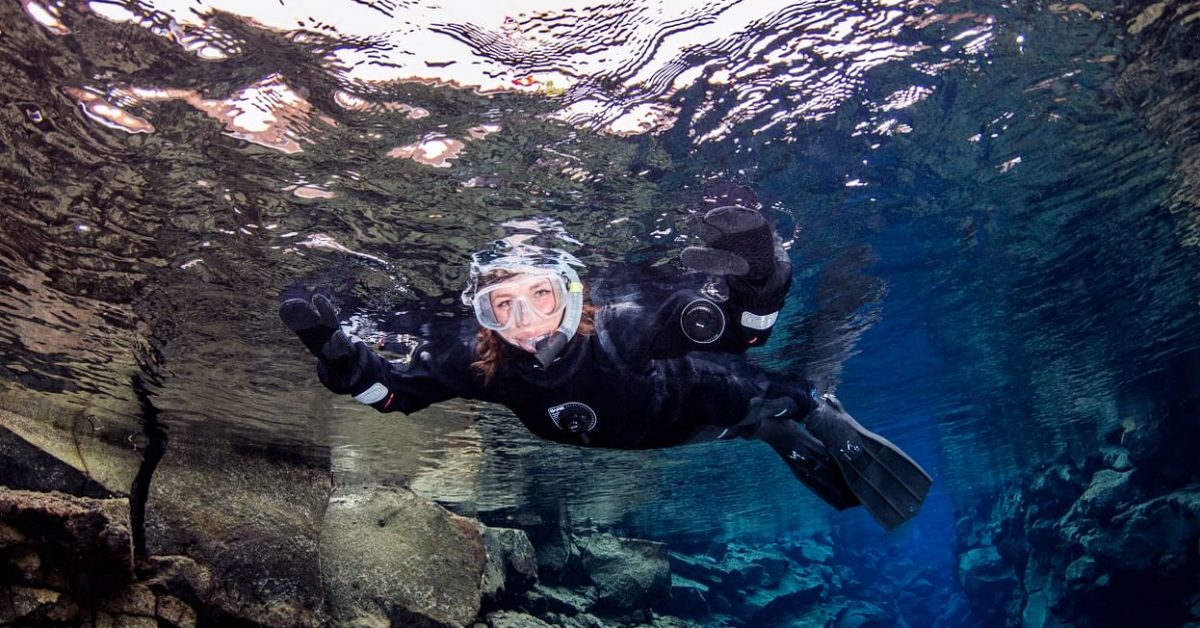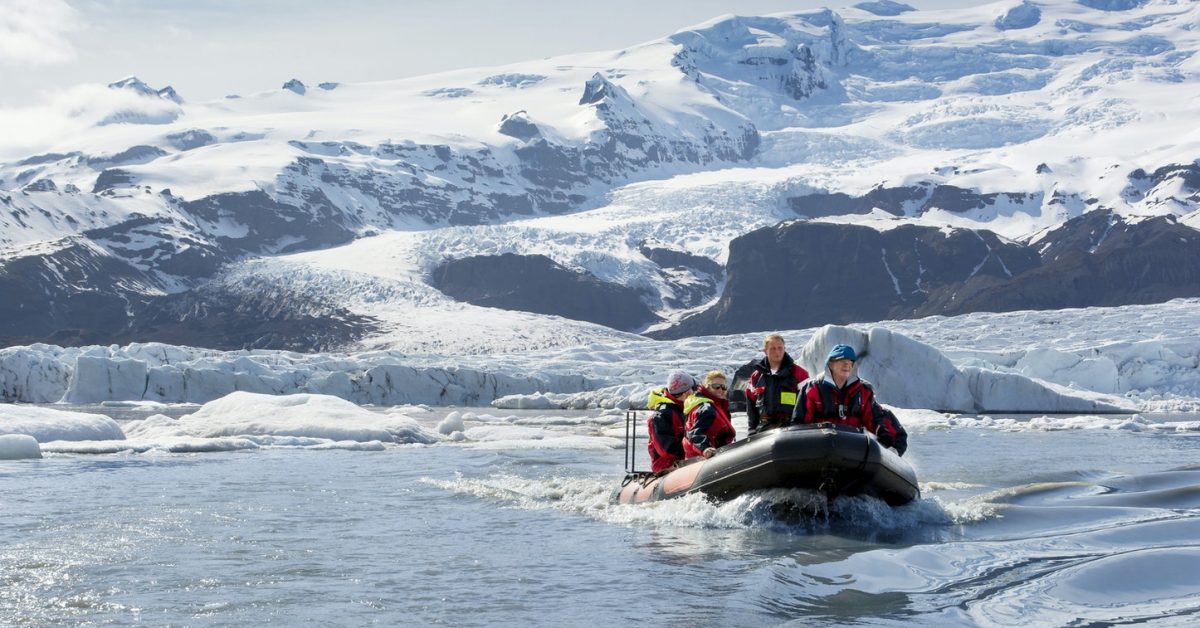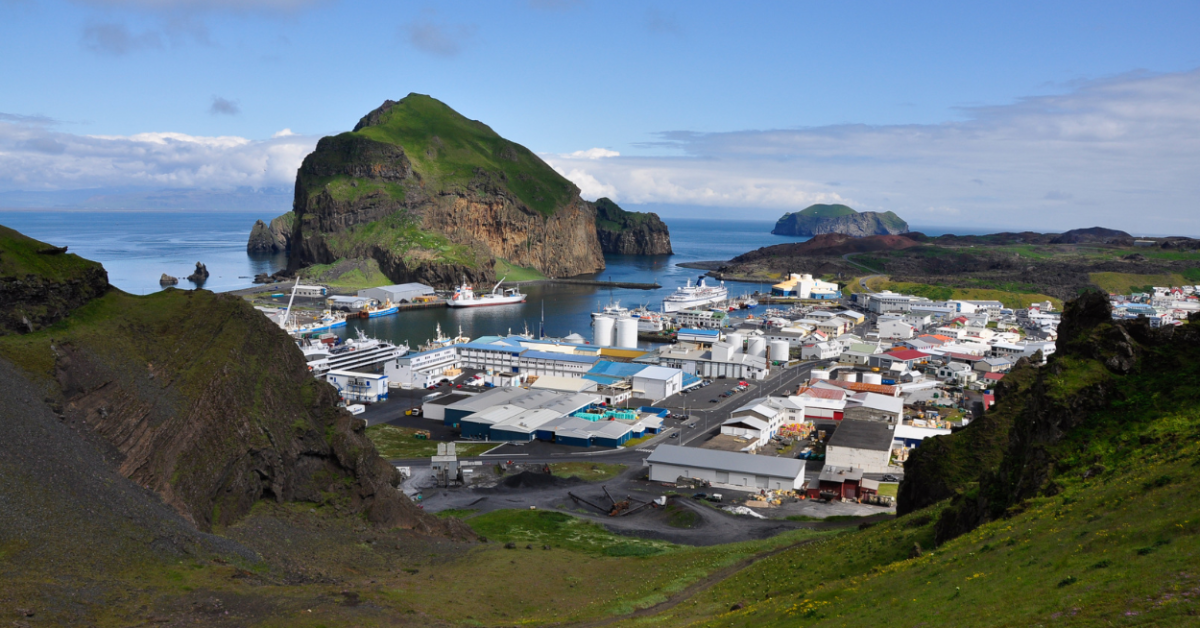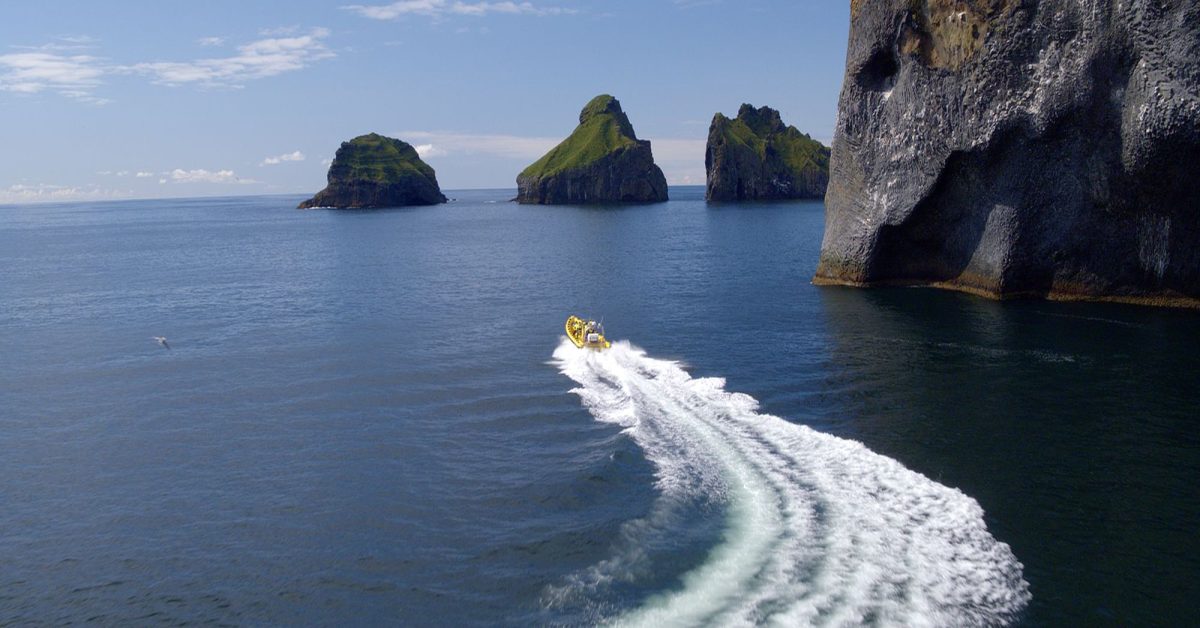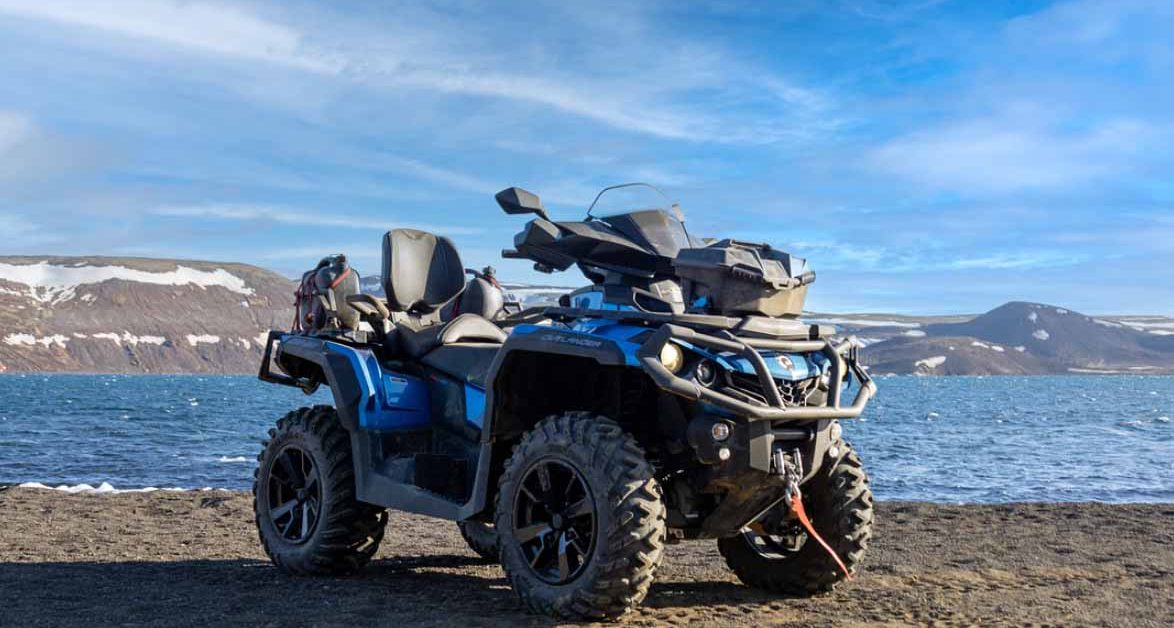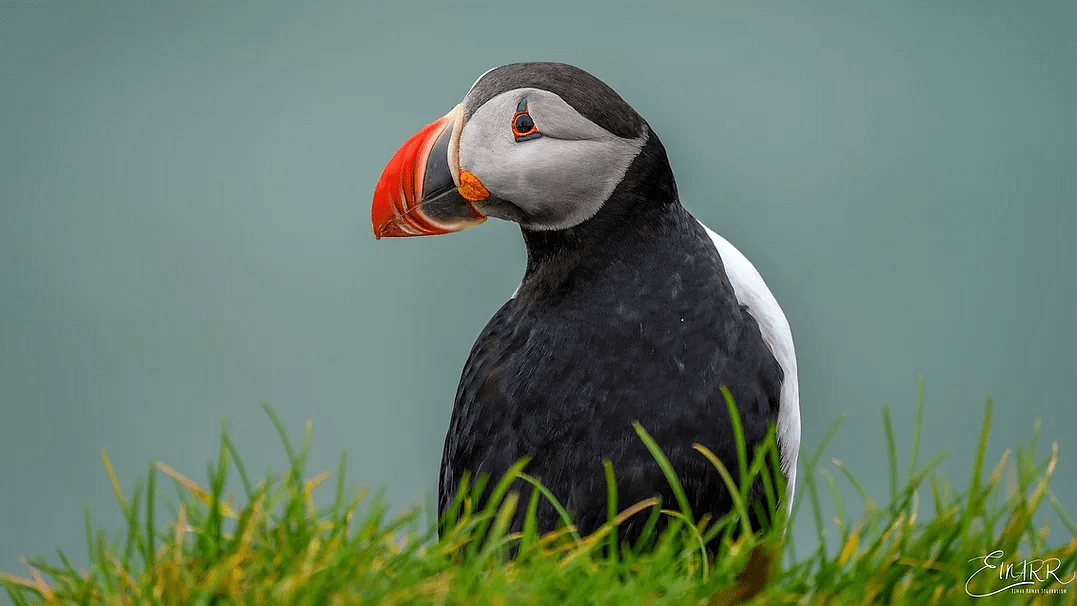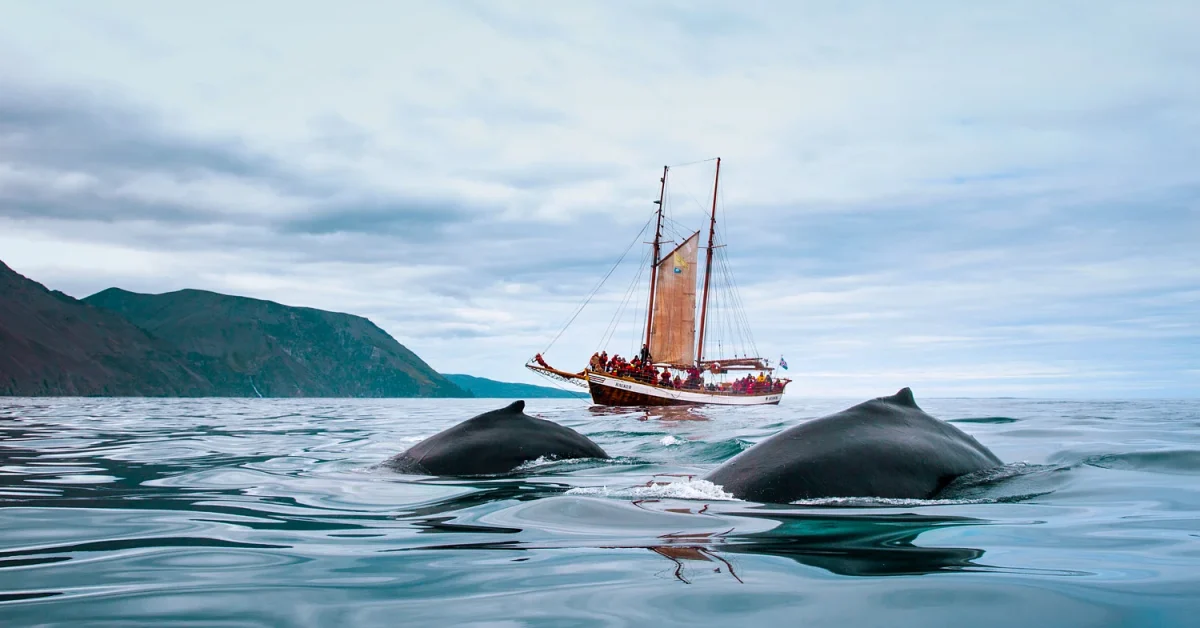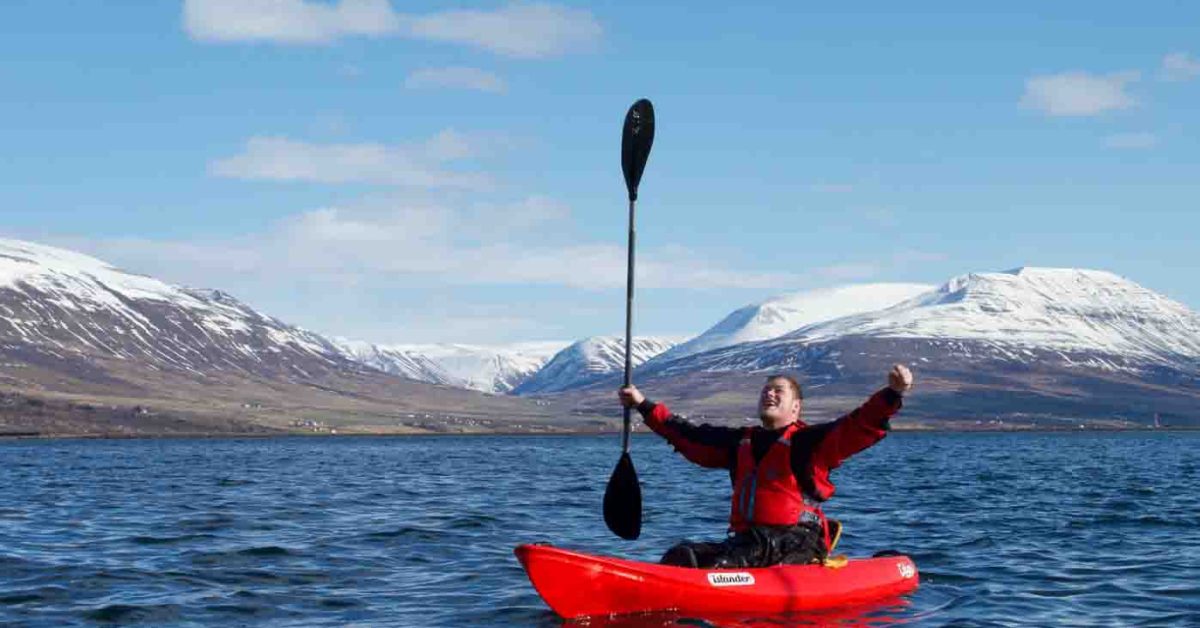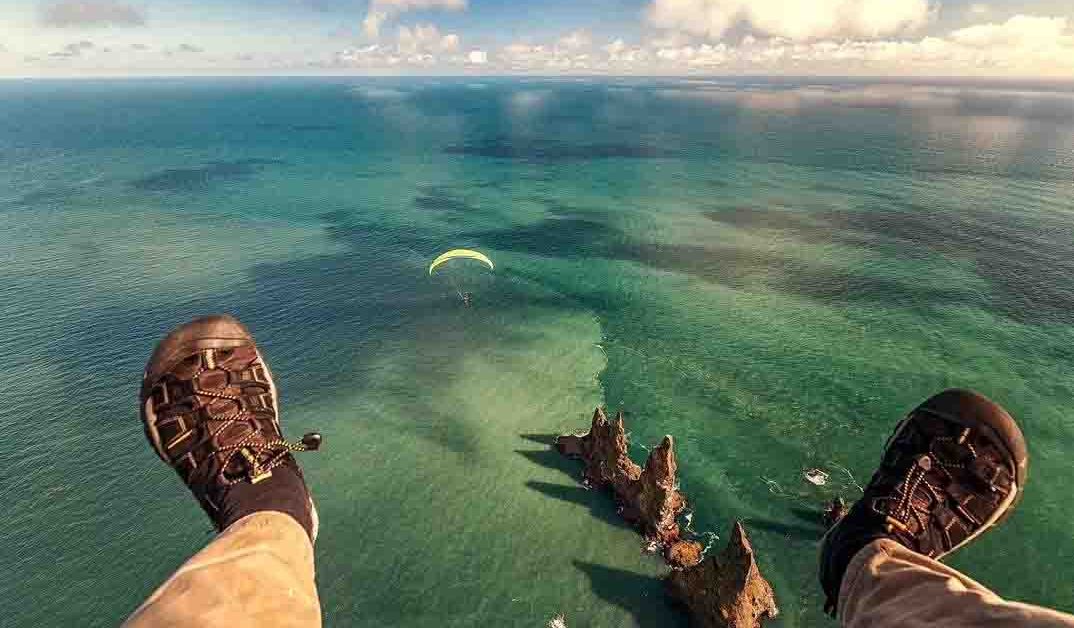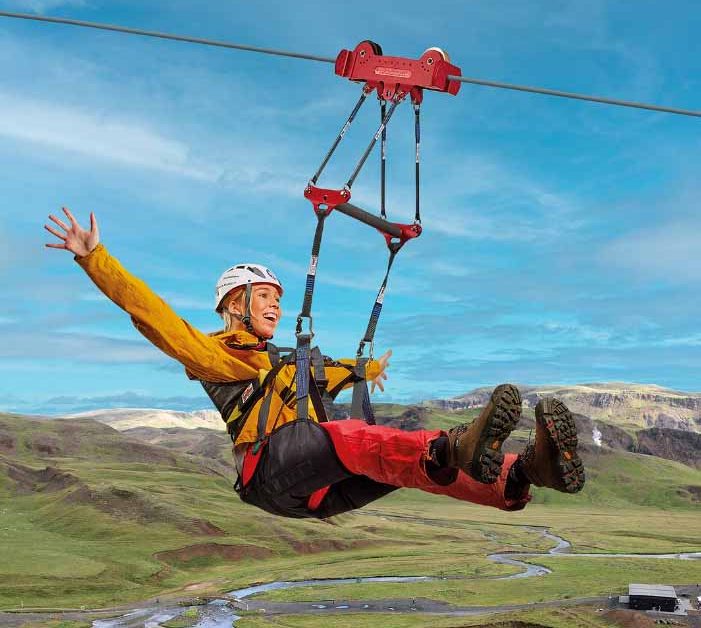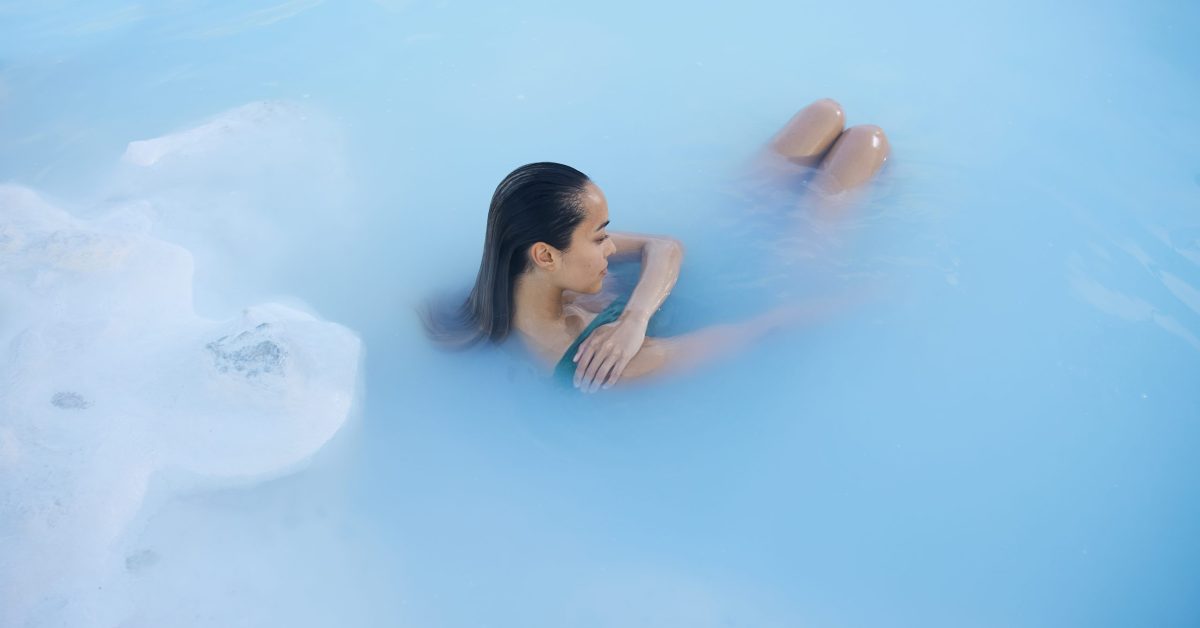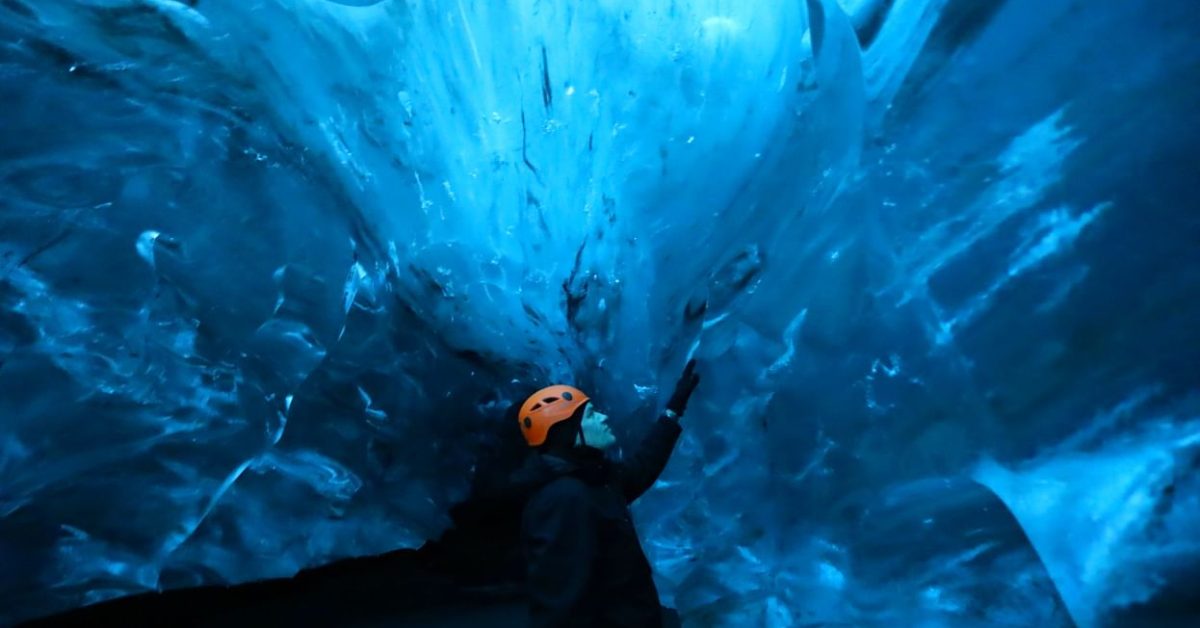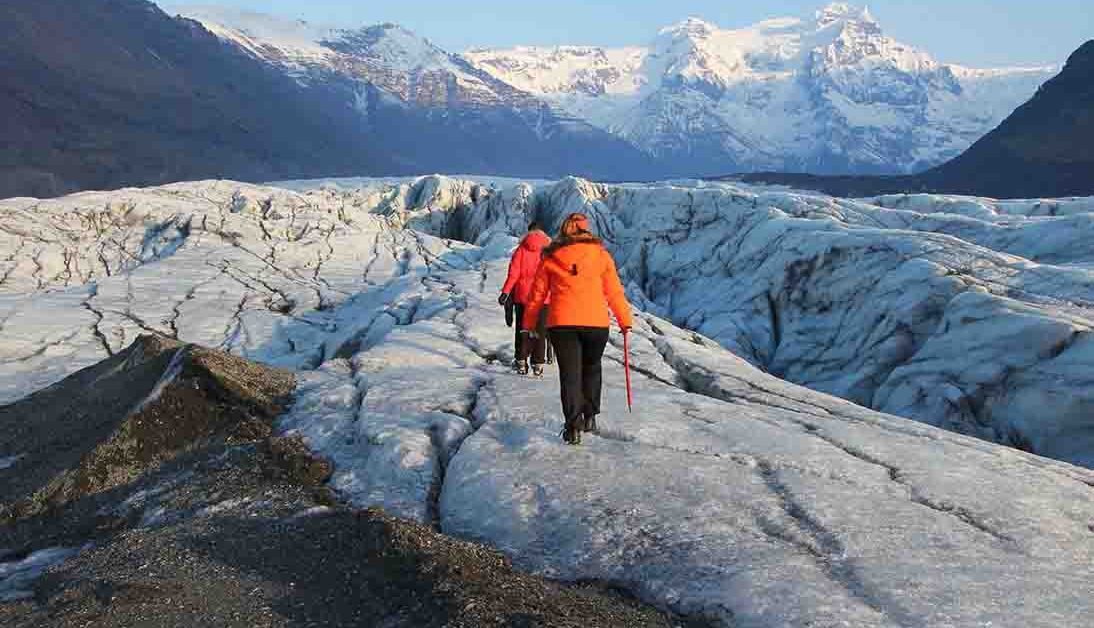Iceland in July, last month of the midnight sun
July is the climax of the summer in Iceland. The temperatures are the warmest, and the weather looks like a typical summer day in the middle of Europe. It is also the last month when you can enjoy the midnight sun.
The daylight starts to decrease once with the summer solstice, and at the latitude of Iceland, this is happening faster than at a lower latitude. This means that, from almost 24 hours of the sun in July, we get only 15 hours in late August.
Many unique and breathtaking adventures are still available during summer, and during July, we also have some festivals and national holidays to celebrate. Take part in them if you are in Iceland in July.
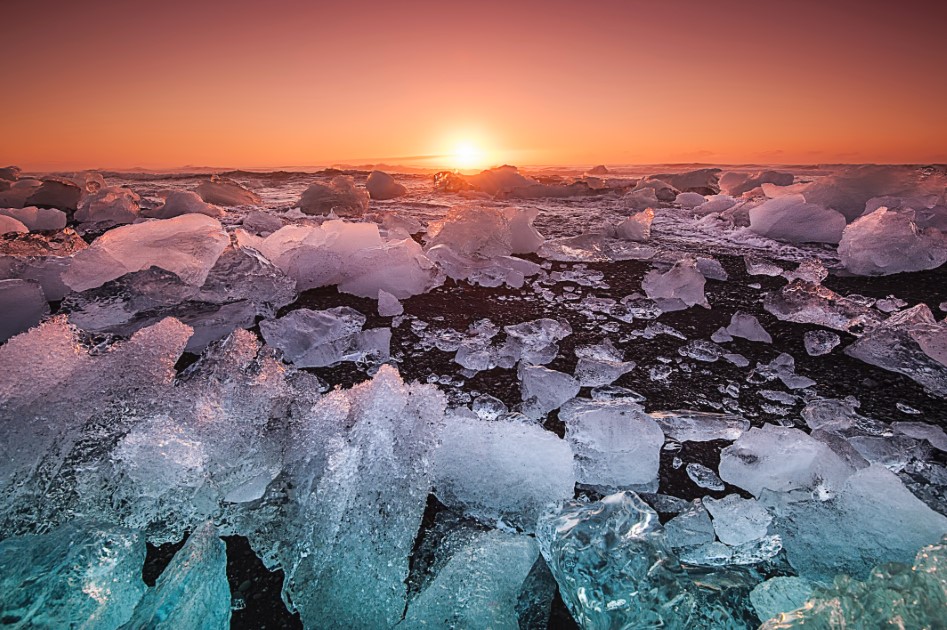
Weather in Iceland in July
July in Iceland offers a unique weather experience characterized by mild temperatures and extended daylight hours. Despite being the height of summer, don’t expect scorching heat—temperatures typically range between 8 to 14 degrees Celsius (46 to 57 degrees Fahrenheit).
One of the most enchanting aspects is the midnight sun phenomenon, where the sun barely sets, granting almost 24 hours of daylight.
While July brings relatively milder weather, it’s essential to be prepared for sudden changes—rain, wind, and even occasional fog are not uncommon.
These weather fluctuations contribute to Iceland’s breathtaking landscapes, creating a dynamic atmosphere perfect for exploring glaciers, waterfalls, and volcanic terrain while necessitating versatile clothing to adapt to varying conditions.

How to dress in Iceland in July?
When packing for a July visit to Iceland, opt for versatile and layered clothing to accommodate the ever-changing weather. Start with a layer of moisture-wicking fabric to stay dry, followed by insulating layers like fleece or wool for warmth.
A waterproof and windproof outer layer is crucial to shield against rain and sudden gusts. Don’t forget sturdy, waterproof hiking boots for traversing diverse landscapes. Packaging a hat, gloves, and a scarf can offer extra warmth, especially during cooler evenings.
While days might seem mild, it’s wise to be prepared for anything—having these layers allows for easy adjustments as temperatures and conditions fluctuate, ensuring comfort while exploring Iceland’s stunning outdoor wonders.
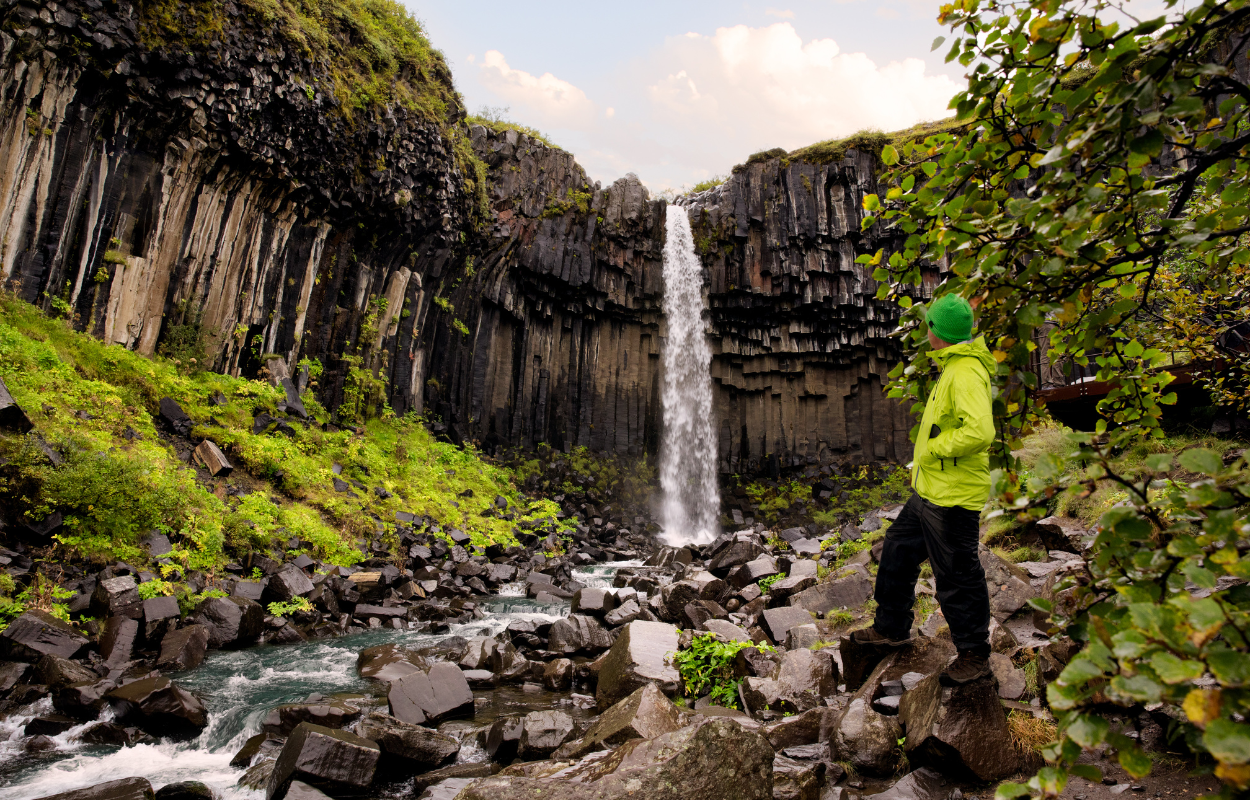
What to do in Iceland in July?
Sightseeing and hiking
This is the perfect time for exploring the country and hiking in the Icelandic Highlands and the Westfjords, accessible only during summer.
The “never-ending” day gives you plenty of time for sightseeing, and the weather is warmer and calmer than in other seasons.
The Highlands are accessible for hiking, and we recommend doing that only with a guide who knows the relief and the trail better.
Laugavegur – Iceland’s most famous trek from Landmannalaugar to Þórsmörk lives up to the hype. The magical, diverse landscape and the long, bright Icelandic summer days will capture your nature-loving heart.
This trail takes adventurers from the geothermal valley of Landmannalaugar and the southern highlands, over the southern highlands to the Þórsmörk valley at the foot of the world-famous Eyjafjallajökull volcano.
The trail crosses many spectacles, including the world’s third most significant geothermal zone, through yellow rhyolite mountains, over black deserts, past incredible canyons and finally into the verdurous valley of Þórsmörk. It is no coincidence that the “Laugavegur” hike each year attracts travellers worldwide and is an excellent favourite amongst locals.
These hikes are long for about five days, including camping and many hours of continuous hikes. Some tours will take you hiking in Landmannalaugar.
Exploring Landmannalaugar is the best activity you can do if you are in Iceland in July.
Snorkelling at Silfra should be on your bucketlist. Described as one of the top dive sites globally by National Geographic, Silfra is located in the historically rich Thingvellir National Park – part of the famous Golden Circle route. Snorkelling in Silfra is a once-in-a-lifetime transcontinental experience.
The guides will show you what National Geographic has described as one of the top dive sites in the world. As you glide between tectonic plates floating on pure, filtered glacial meltwater, you’ll find out for yourself and tick off your bucket list for the ultimate tour of breathtaking underwater views only available in Iceland in the world’s most transparent waters.
The warm weather in the summer is melting the ice on the glacier lagoons, and the boat tours can operate again. The most famous glacier lagoon of Vatnajökull is Jökulsárlón Glacier Lagoon, full of icebergs broken from Breiðamerkurjökull tongue.
All the icebergs from this lagoon are taken by the ocean currents and brought back to land at Diamond Beach, right next to the lagoon.
Jökulsárlón Glacier Lagoon is one of the most visited places in Iceland and for an excellent reason. Also called the Crown Jewel of Iceland, Jökulsárlón Glacier Lagoon will impress you with its beauty and unicity. The landscape is fantastic.
The glacier lagoon is not frozen during the summertime, so boat trips on the lagoon are almost every day. There are two options for boat tours on the Jökulsárlón Glacier Lagoon.
You probably have seen photos of the “Elephant Rock” and pictures of an island with only a building. Those are some of the most famous images from Iceland that you will see online, but where were they taken? Westman Islands!
Located in the South of Iceland, Vestmannaeyjar is an archipelago with 15 islands and 30 rock stacks. It is one of the most exciting places in Iceland as it has a rich and not-so-happy history but rich geology.
Also, Westman Islands have rich wildlife that includes many species of birds and the largest population of puffins, the first beluga whale sanctuary in the world, and many other species of whales on the ocean waters near the islands.
You can experience all those natural wonders from a boat tour around the Westman Islands. We recommend three boat tours on Westman Islands operated by our friends from RIB Safari.

The South Coast of Iceland is a geological masterpiece of past volcanic activity. South Coast has some of the most beautiful black sand beaches and an impressive volcanic and glacial relief.
Exploring the South Coast is such an exciting experience, and it can become unforgettable if you study it on an ATV tour.
Our friends from Arcanum are organising some ATV tours on the South Coast of Iceland during summertime, and you have to try one.
Every summer, we have some cute visitors here in Iceland, and they stay with us from mid-May to mid-August. I am talking about puffins. The little birds are unofficially the national bird of Iceland.
Although you can find the largest colony of puffins in south Iceland in Westman Islands, there are also other places where you will see puffins during summer, and those places are Látrabjarg, Ingólfshöfði, Flatey Island, Borgarfjörður Eystri, Breiðafjörður.
They usually stay on the cliffs along the coast to see them in other areas such as Dyrholaey, Grimsey Island or Akurey, Engey or Lundey Islands. Still, the larger colonies can be found in the places mentioned above.
Try a puffin-watching tour and admire these cute birds closer to their natural habitat.
The summer season is great for whale watching, as the wildlife in the bay is at its highest peak. This is when the minke whales, along with the white-beaked dolphins, harbour porpoises and humpback whales, are most abundant.
The best part of travelling to Iceland during summer is that you can do some excellent activities there. And mainly speaking of whale watching, the summer season is the best because whales can be seen in many parts of Iceland.
Before going on a tour, you must understand that bad weather conditions can reschedule or cancel the tour. Also, as you watch marine life, you have to realise that everything happens in the whales’ natural environment, and you will not be guaranteed to see many whales. Sometimes, it sees no whales, but those cases are rare.
For adrenaline lovers, kayaking tours are perfect. You can go kayaking on the Icelandic rivers or the glacier lagoons. To sail along the immense glaciers is something you have to try. This is one of the best activities in Iceland in July.
See Iceland from above on a tandem paragliding tour. Iceland is beautiful on the ground, but from above, it is astonishing. You need no prior knowledge to do this tour; you have to bring courage, and then you will fill up with adrenaline. Enjoy a paragliding tour in Iceland in July.
A zipline ride is a great adventure for all those who love the thrill of doing something challenging but, at the same time, very safe. See the stunning Black Sand Beach from above on a zipline adventure.

Geothermal baths and hot springs
There is no right time for a geothermal bath. And it is a must-do in Iceland. Check our blog to see the best places to relax like a true Viking and where you can find natural hot springs in Westfjords.
Also, book your ticket now if you plan to come to Iceland in July.
Depending on the temperatures outside, there might be changes in the operation of the Katla Ice Cave tour.
The temperatures are rising, and the ice caves at Vatnajökull glacier have become dangerous to explore. However, some ice caves are available for exploration all year.
One ice cave is the Katla ice cave in South Iceland. It is located in the Kötlujökull glacier, part of the Mýrdalsjökull glacier.
And the other one is the ice cave at Langjökull Glacier. The ice cave at Langjökull is artificial, so there has been an entire process of carving into the glacier and forming the tunnel. Local authorities opened the ice cave to the public in 2015, and the tunnel inside the glacier is 550m long and goes 30 meters into the glacier.
These are excellent options if you want to explore ice caves in Iceland in July.
In July, Iceland has many more exciting and unique activities; check the ones below and enjoy your time in the Land of Fire and Ice.














